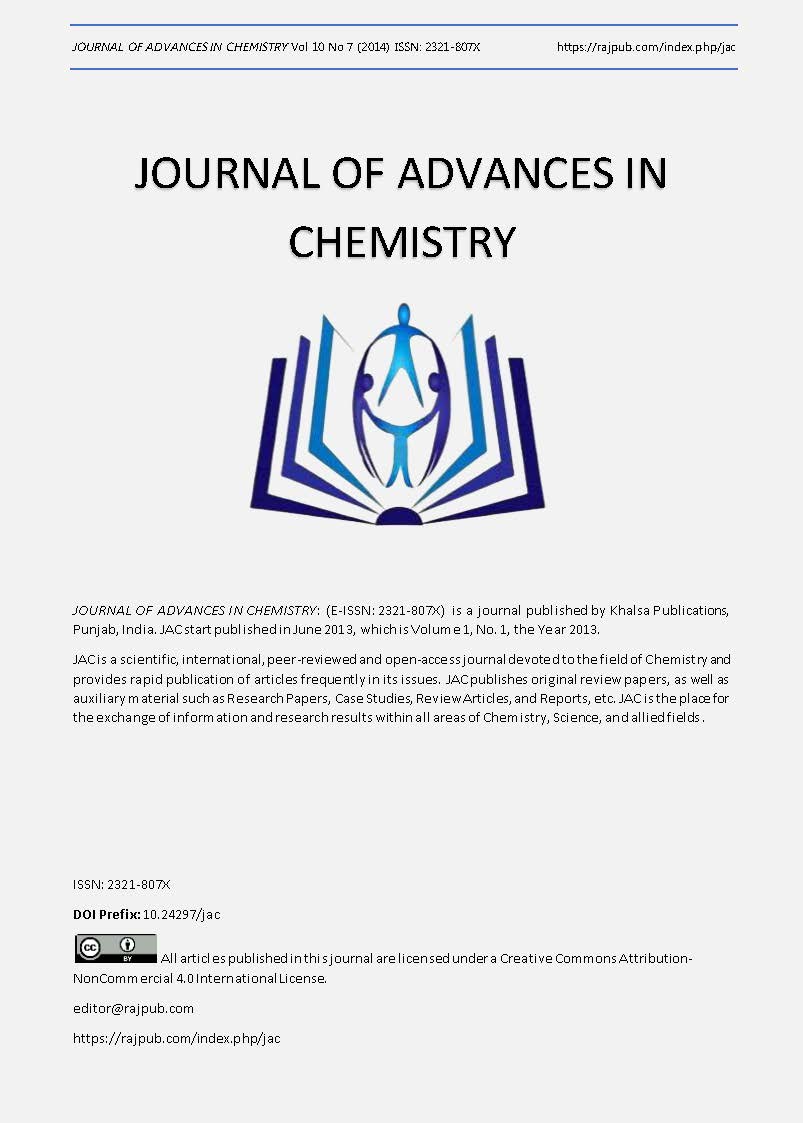Correlation between PAL, medicarpin, phenol and flavonoid content in Medicago sativa L. at different growth stages
DOI:
https://doi.org/10.24297/jac.v10i7.6799Keywords:
Medicago sativa L, PAL activity, total phenol and total flavonoid content, Medicarpin, Stages of developmentAbstract
Alfalfa (Medicago sativa L.) is from Fabaceae family that has several flavonoid compound in roots and shoots. in alfalfa the major phytoalexin is medicarpin. In this study, total phenolic and flavonoid compounds and phenylalanin ammonia lyase (PAL) activity in different stages of development were measured. In this research the concentration of medicarpin by HPLC were studied in different stages of development. The lowest and highest level of the concentration of medicapin were in seedling stage and budding stage of growth, respectively. The results indicated that contents of total phenolic compounds and total flavonoid and PAL activity increase with developmental stage ,but decrease in flowering stage of growth.
Downloads
References
2-Bradford, M, 1976. A rapid and sensitive method for the quantitation of microgram quantities of protein dye binding. Analytical Biochemistry. 72: 248-254.
3- Dixon, RA., Choundhary, AD., Dalkin, K., Edwards, R., 1992. Molecular biology of stress induced phenylpropanoid and isoflavonoid biosynthesis in alfalfa. Phenolic Metabolism in Plants. 26: 91-138.
4-Ghanati, F; F. Khatami; Effect of UV irradation on cell viability, anthocyanin and falconoid contents of callus-cultured Malva neglecta analysis. Agrobios, New Dehli, India. Pp:438.
5-Gagnon, H; Tahara S.L; Ibrahim, R.K. 1995. Biosynthesis, accumulation and secration of isoflavonoids during germination and development of white lupn ( Lupinus albus L.) Plant Phisiology. 106:195-202
6-Marinova, D., Ribarova, F., Atanassova, M; 2005. Total phenolic and total flavonoid in ulgrian fruits and vegetables. J. Univ. chemistry Technology Metal. 40:25-260.
7-Matsouka, I., Beri, D., Chinou, I., Haralampidis, K., Spyropoulos, C, 2011. Metals and selenium induce medicarpin accumulation and execration from the roots of fenugreek seedling: a potetial detoxification mechanism. Plant soil, Published online.
8-Stalikas, C; 2007. Extraction, separation, and detection methods for phenolic acids and flavonoids. Plant Biology Plant Pathology. 61: 89-101.
9-Stochmal, A; Oleszek, W. 2007. Seasonal and strucural changes of flavones in alfalfa (Medicago sativa) aerial parts. Journal of food. Agriculture Environment. 5: 160-174. 10-Tsiri, D., Chinou I., Haralampidis, k., Halabalaki, M; Spyropoulos, C, 2009. The origin of copper induced medicarpin secretion from roots of young fenugreek seedling are regulated by copper concentration. Plant Sciense, 176:367-374.
11-U.Mackenbrock, W. Gunia, W. BARZ. 1993. Accumulation and metabolism of medicarpin and maackiain malonylglucosides in elicited chickpea (Cicer arietinum L.) cell suspension cultures. Plant Physiology. 142: 385-391.
12-Winkel-Shirely, B; 2001. Flavonoid Biosynthesis. A colorful model for Genetics, Cell Biology, and Biotechnology. Plant Physiology. 126: 485-493.
13 -Wang . J; Zheng L. P; Wu, J.Y and Tan, X. 2006. Involvment of nitric oxide in oxidative st Phenyalanin ammonia lyase activating and taxol prodaction induced by low-energy ultrasound in taxus yunnanensis cell suspension cultures. Nitric Oxid Biology and Chemistry. 15:351-358.
Downloads
Published
How to Cite
Issue
Section
License
 All articles published in Journal of Advances in Linguistics are licensed under a Creative Commons Attribution 4.0 International License.
All articles published in Journal of Advances in Linguistics are licensed under a Creative Commons Attribution 4.0 International License.




